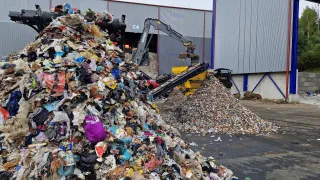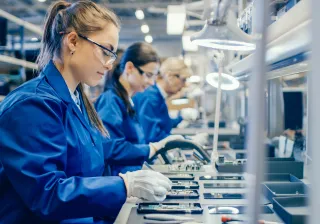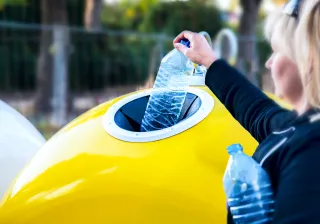The MSWPlast project studies the potential for extracting plastics from mixed wastes, aiming to increase plastics recycling while reducing environmental impacts from incineration. A large-scale sorting trial conducted at Remeo’s sorting plant has indicated there is significant potential for post-sorting in Finland.
A vast majority of plastics end up in incineration, causing emissions, contributing to climate change, while also consuming fossil material resources. In addition, Finland struggles to meet the recycling targets set in legislation for plastic packaging waste.
Today, little is known about the specific polymers present in the mixed waste. Different polymers are, in fact, different materials that need to be separated for recycling. Current mechanical recycling processes target specific polymers, which is why mechanical recycling of a mixed plastic stream to high quality recyclates is not technically possible.
Decoding plastic composition in waste streams
In the sorting trial, the polymer composition of the plastics was analyzed. After separating the fine fraction, the waste was divided into 2D films and 3D items. On the sorting line, optical sensors recognized different materials and generated statistics on the surface area distribution of the different materials.
“The plastics separated from mixed municipal waste are rich in polyolefins (PE and PP), making this an attractive feedstock for recycling. The fact that these plastics seems to be somewhat dirtier than the plastics sorted from separately collected packaging waste supports chemical recycling. However, when adequately washed, they offer high potential also for mechanical recycling.” says Jaakko Tuomainen, SPIRIT Programme Manager of Borealis.
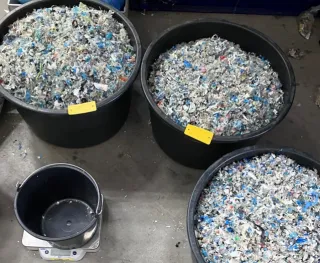
The surface distribution showed that the main polymers in both fractions consisted of the PE (polyethylene), PP (polypropylene), and PET (polyethylene terephthalate). The plastic composition of the 2D and 3D fractions indicate that with well-designed sorting, it should be relatively easy to sort out plastics for recycling. The experiences of post-sorting in Sweden, Norway and the Netherlands, support the conclusion that MSW offers an affordable and abundant source for waste plastic for recycling instead of incinerating.
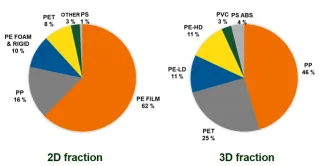
Plastic compositions of the 2D and 3D fractions after ballistic sorting. The sensor data shows that the surface distribution of the 2D fraction comprised mainly of paper, followed by the polymers PE, PP, and PET. The surface distribution of the 3D fraction comprised mainly of the polymers PP, PET, Tetra Paks (multimaterial polymer + cardboard), and PE.
Redesigning recycling: Integrating new sorting models into Finland’s systems
All plastic waste must go through industrial sorting prior to recycling. This also includes the plastic packaging waste that has been sorted by consumers and collected separately as plastic packaging waste. It consists of many different types of plastic. In addition to the sorting that takes place in the kitchen, the recycling process requires efficient sorting into separate polymers.
The MSWPlast project also investigates how new models for sorting and recycling could fit into our current systems. Industrial sorting of plastics from mixed waste is expected to offer an undeniable potential for plastics recycling that would complement the current separate collection system, improving Finland’s recycling performance and providing valuable raw materials for the domestic plastic industry.
The two-year Business Finland funded co-research project, MSWPlast, started in January 2023 and will continue until the end of 2024. The project is coordinated by VTT, with research partner SYKE, and industrial partners Borealis, Remeo and Vantaan Energia. The project is part of the SPIRIT ecosystem led by Borealis.

